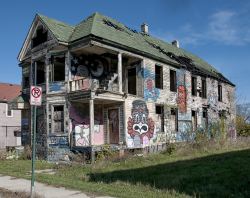Here’s a question I received via email from a reader:
As a real estate buyer, here’s a major concern I have when buying a home for the long term.
I bought a house in Phoenix a few years ago where the development was built in the ’70s. At the time it seemed like a good buy. However, a couple of years later it was obvious the neighborhood was in significant decline — for instance, a nearby house was known to be a drug supplier.
The number of cars parked on the street (again, this was a development built in the ’70s where two car garages were part of the package) was on the rise.
After I bought, I realized the neighborhood was in decline, and I sold about two years later.
I haven’t bought a house since, and one of the reasons is that I realize I don’t know how to tell if a neighborhood is in decline. Any advice?
That’s a tough one. I’m not sure that there really is a good way to get a sense of the direction that a neighborhood is headed (improvement vs. decline) without actually living there. You could certainly attempt to look at various stats such as business openings/closures, incomes, etc. but the problem is that these are often difficult to find at a level more fine-grained than zip codes.
Probably the best way I can think of to get a sense for the trend of a neighborhood like that would just be to ask some people who have actually lived there for a while. Spend a little time with county records looking up homes that have been owned by the same people for ten years or more, and just go knock on their door and strike up a conversation some Saturday.
I realize that’s a rather radical suggestion in a place as anti-social as Seattle, but it just might work.
